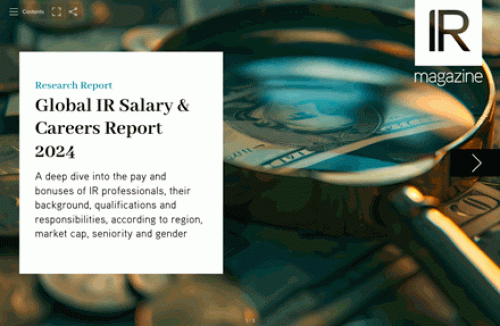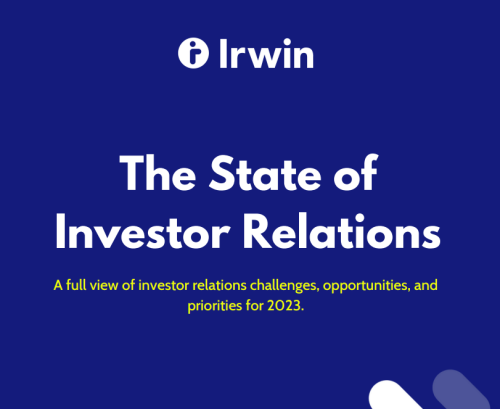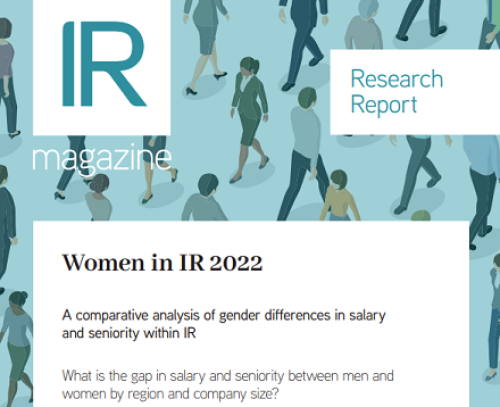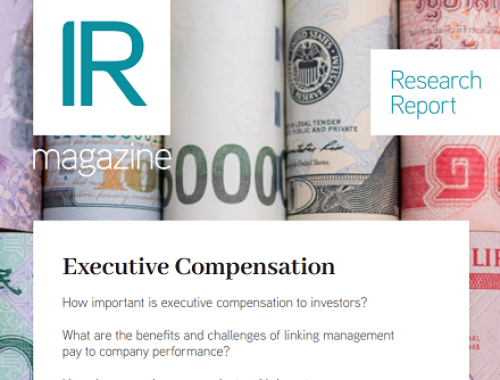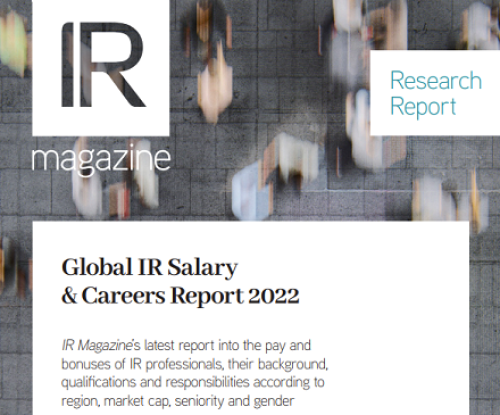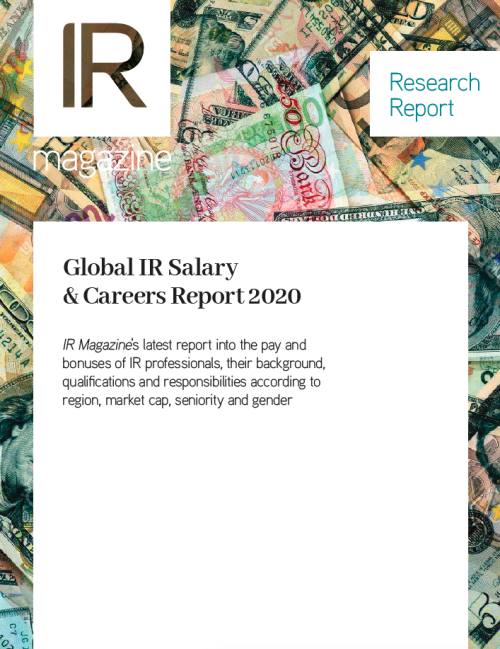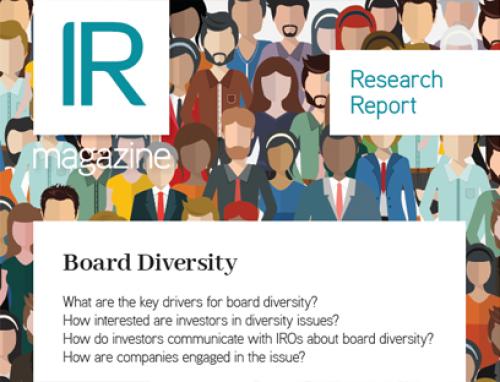This article was sponsored by Citi
This is the third consecutive year IR magazine has attended Citi’s IR Academy in New York, joining an audience of IROs from both US and non-US companies in early October.
In the spirit of an ‘academy’, these companies came to learn from experts representing Citi’s trading, equity research, corporate finance and equity capital markets divisions.
But as European IROs compared debt crisis tales with peers from the US, Asia and elsewhere, it turned out to be as much an oasis of camaraderie as it was a study session.
Leading off, Brennan Warble, managing director and head of Citi’s Americas sales trading, talked about how IROs can navigate a high-volatility environment.
Extreme markets, he said, always bring structural change, such as the Dodd-Frank Bill coming out of the financial crisis of 2008, or order-handling rules and trading curbs after the flash crash of 2010.
The volatility that gripped the market in August may not trigger more new rules, but there will be more enforcement and implementation of recently enacted ones.
For example, IROs will need to understand more about how orders for their stock are being handled.
The Rise of ETFs and index funds
Throughout this year’s IR Academy, there was much discussion of ‘highly correlated markets’ where investors are chasing the same positions, causing a wide range of securities – and many funds – to rise and fall together.
‘For a fund manager, it’s very difficult to outperform because all stocks, all asset classes, are moving in sync,’ Warble explained.
That high correlation, combined with the illiquidity of single stocks in extreme markets, is one of the forces behind the explosive growth of exchange-traded funds (ETFs) and index funds.
‘People aren’t necessarily looking at your company; they’re just looking at which indices you’re in,’ Warble said, suggesting there is an opportunity for IROs to explain to shareholders why their company should be afforded a premium valuation.
Next up, Tobias Levkovich, managing director and chief US equity strategist at Citi, invoked his ‘trading places’ thesis, originally put forward in 2001.
It shows that we’re in a period of meaningful trading rallies and corrections, like the 1930s or the 1970s, and can’t expect a steady upward trajectory.
As predicted, 2011 had a strong start and a tougher middle, but Levkovich expects a better end to the year. Investors in today’s trading environment need to focus on sentiment, earnings, credit conditions and valuation.
The main risks hanging over the market are federal policy, deficits and debt, trade policy and exogenous shocks. Considering those factors, 2012 looks uncertain, with modest returns tracking earnings-per-share growth.
But Citi’s Panic/Euphoria Model – which broke into panic territory the week of August 19 – indicates a 97 percent probability that stocks will be up 12 months later, and a 90 percent probability they’ll be up six months later.
‘The probabilities are compelling at this point,’ Levkovich stated.
Cash amid the tumult
Carsten Stendevad, managing director and global head of Citi’s financial strategy group, tackled the question of how companies should think about deploying capital in such volatile markets.
Looking back to the 2008 financial crisis, the corporate world simply stopped what it was doing. ‘Does today’s environment merit a similar response?’ Stendevad asked. ‘The answer is no. The environment is different now.’
One big difference today is that corporate fundamentals are strong, with good operating margins, thanks to the deep cuts made two years ago.
Plus, large, well-rated companies can access financing and there are ways to deploy capital in a low-growth, volatile environment that can add shareholder value.
For most companies in this environment of strong cash flow, strong balance sheets, few investment opportunities, low capex requirements and difficult M&A in choppy conditions, distributions are the main option.
Indeed, share buybacks in 2011 are expected to approach 2006’s record level, and companies with buyback plans already in place should be prepared to accelerate them during periods of volatility like the one in August.
A lot of companies cut their dividends in 2009 and some are now thinking of increasing them as a sign of strength. The premium for high-dividend-paying stocks has come down, however, so Citi’s recommendation is to maintain existing dividends and avoid increasing them or initiating new ones.
Rounding off Citi’s expert lineup was Doug Baird, managing director and chairman of equity capital markets. From his perspective handling equity issuance, he sees investor relations as having more ‘vibrancy and importance’ than ever due to the fragmentation of the information flow, combined with the decreasing frequency of equity capital raising and increasing complexity of equity stories.
‘When you’re financing, it’s an amazingly powerful moment to be delivering an IR message,’ Baird said. ‘The whole world is focused on your company and why it wants to own it. But if you’re not financing, you don’t have that opportunity.’
What’s more, during volatile conditions, Citi advises clients to get in and out of the market quickly. The result is that the relative number of days spent on the road for secondary offerings is in decline.
All in all, companies are under investors’ microscopes less often and for shorter periods of time, leaving IROs to pick up the slack and communicate the investment story consistently and strongly.
‘Rest assured, for a lot of reasons, from structural, long-term changes in the way equity is valued and traded all the way to volatility in today’s market, the work you do talking to investors is vitally important,’ Baird concluded.
About CitiCiti, a leading global financial services company, has approximately 200 mn customer accounts and does business in more than 160 countries and jurisdictions. Through Citicorp and Citi Holdings, Citi provides consumers, corporations, governments and institutions with a broad range of financial products and services, including consumer banking and credit, corporate and investment banking, securities brokerage, transaction services and wealth management. Citi Depositary Receipt Services is a leader in bringing quality issuers to global capital markets, and in promoting depositary receipts (DRs) as an effective capital markets tool. Citi began offering DRs in 1928 and today is widely recognized for providing companies with access to the powerful global platform they have to offer.Contact: Beate Melten Email: beate.melten@citi.com Phone: +1 212 816 6855 |

